
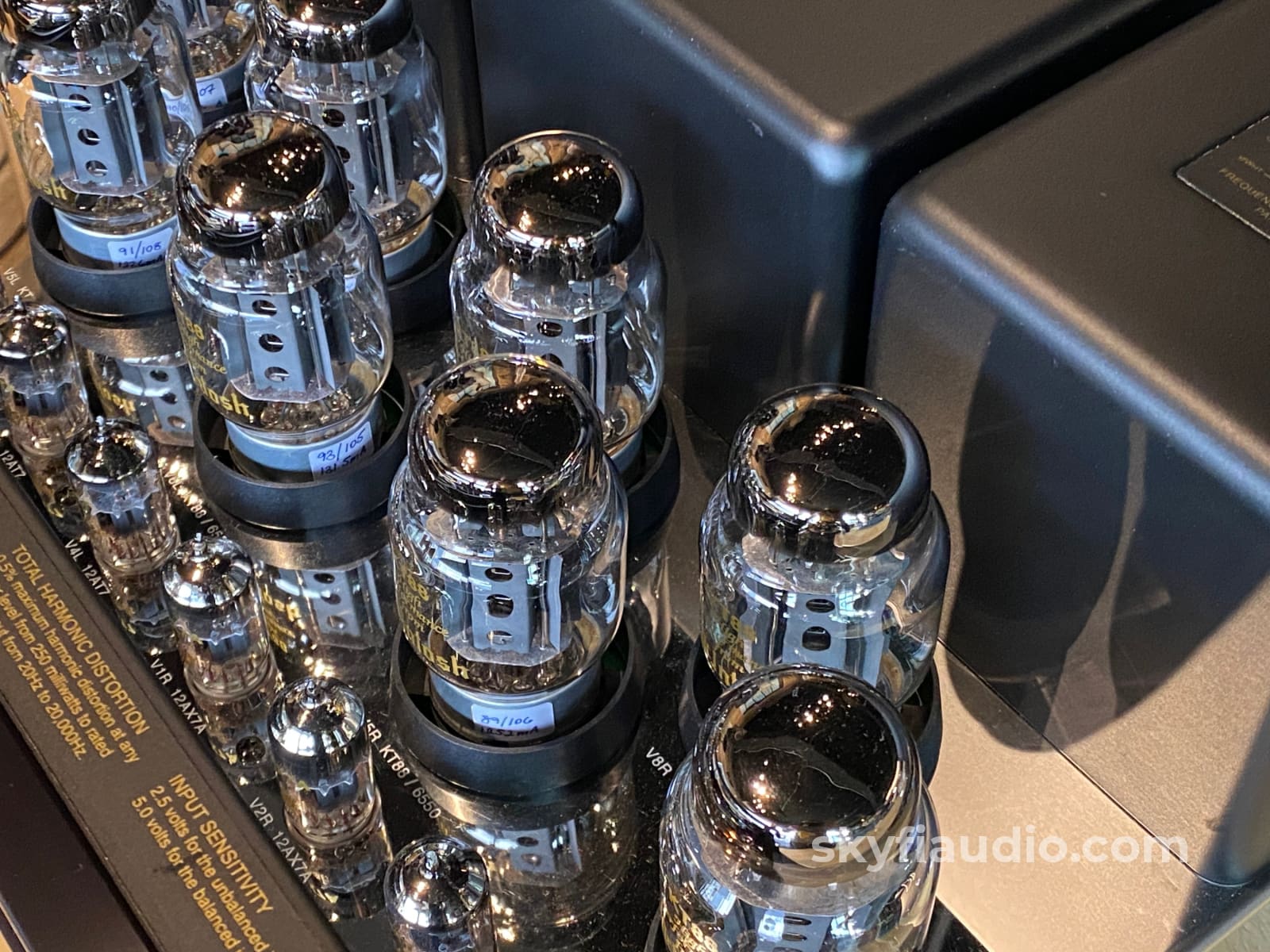
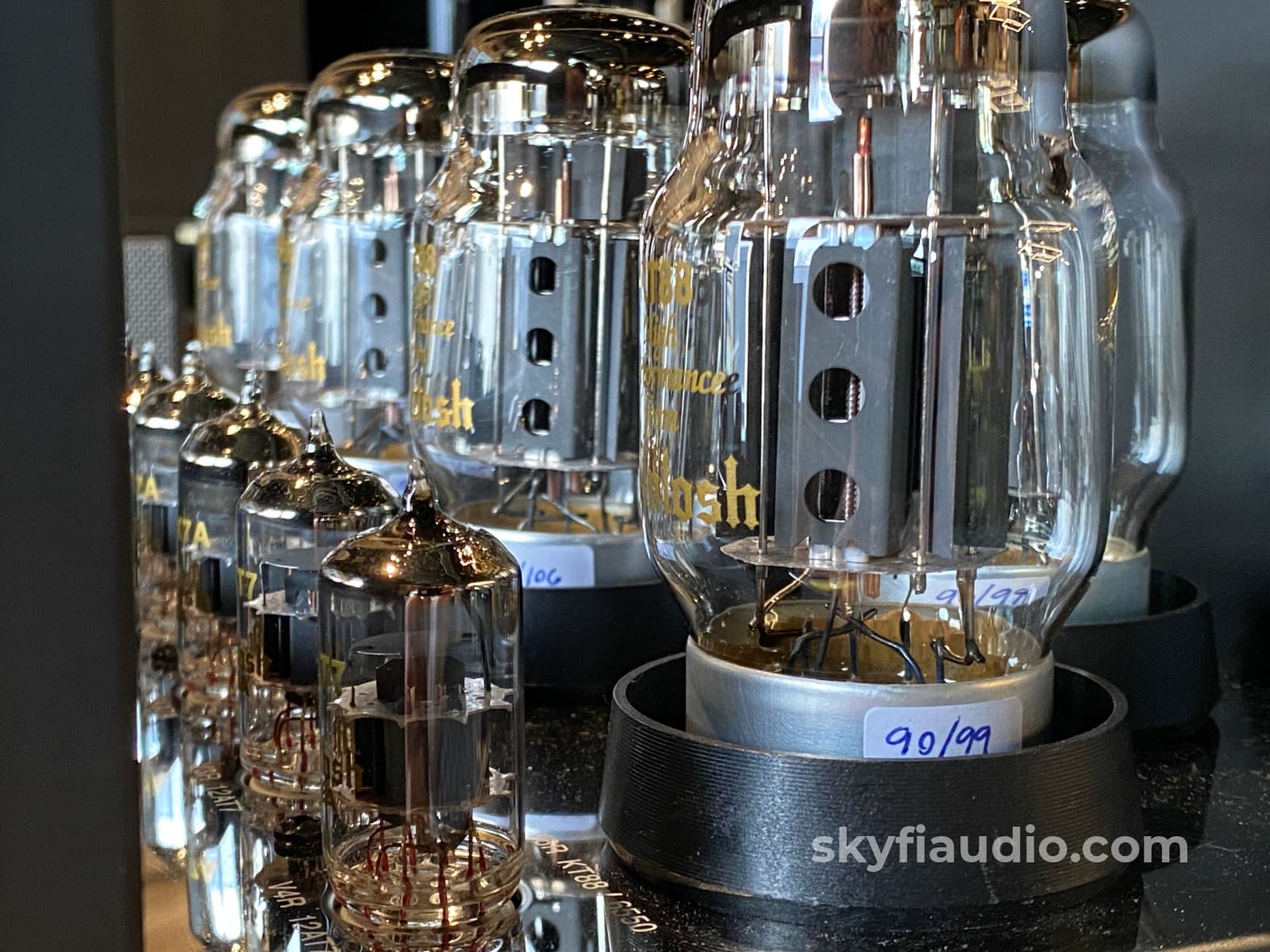

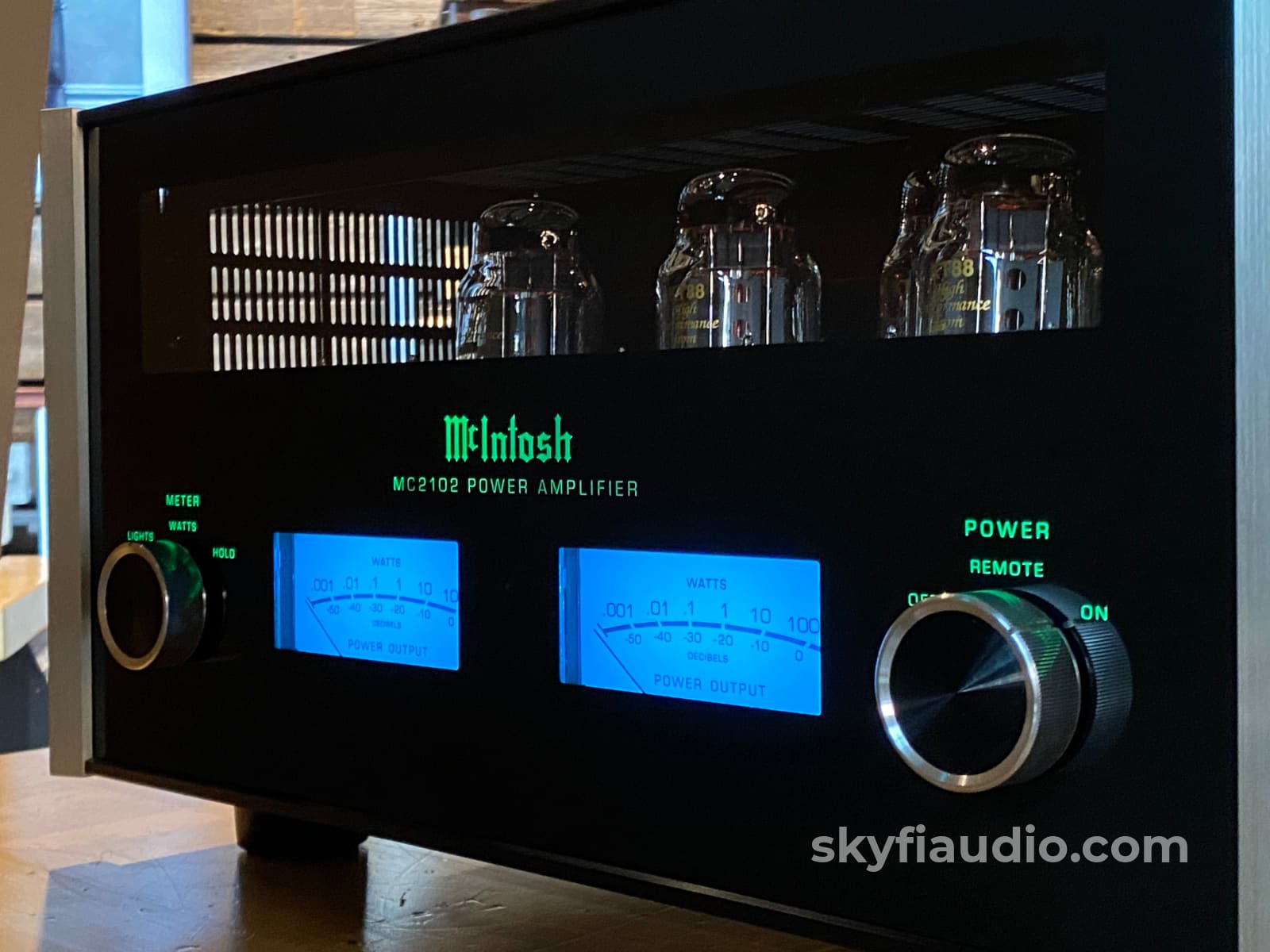
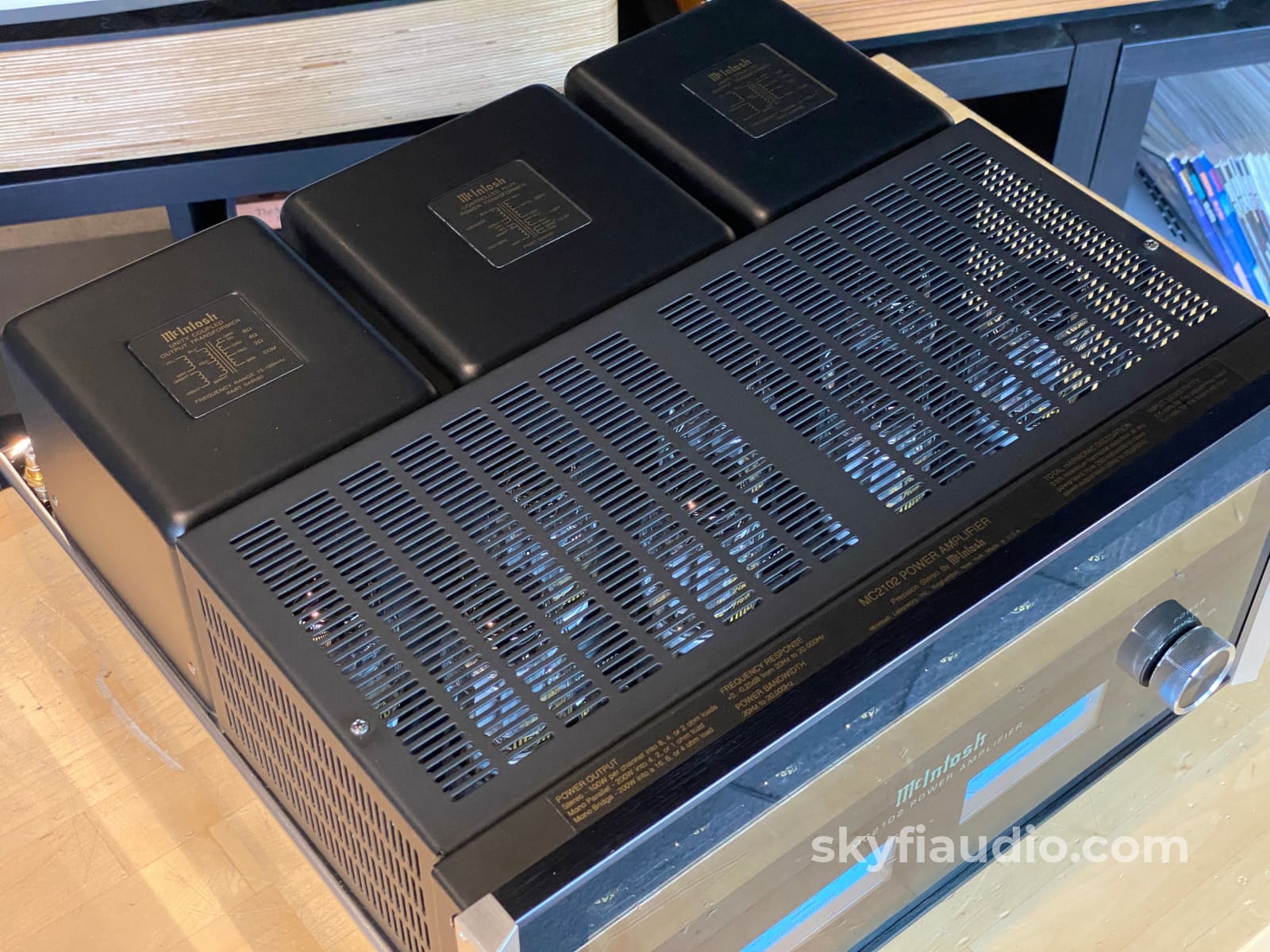
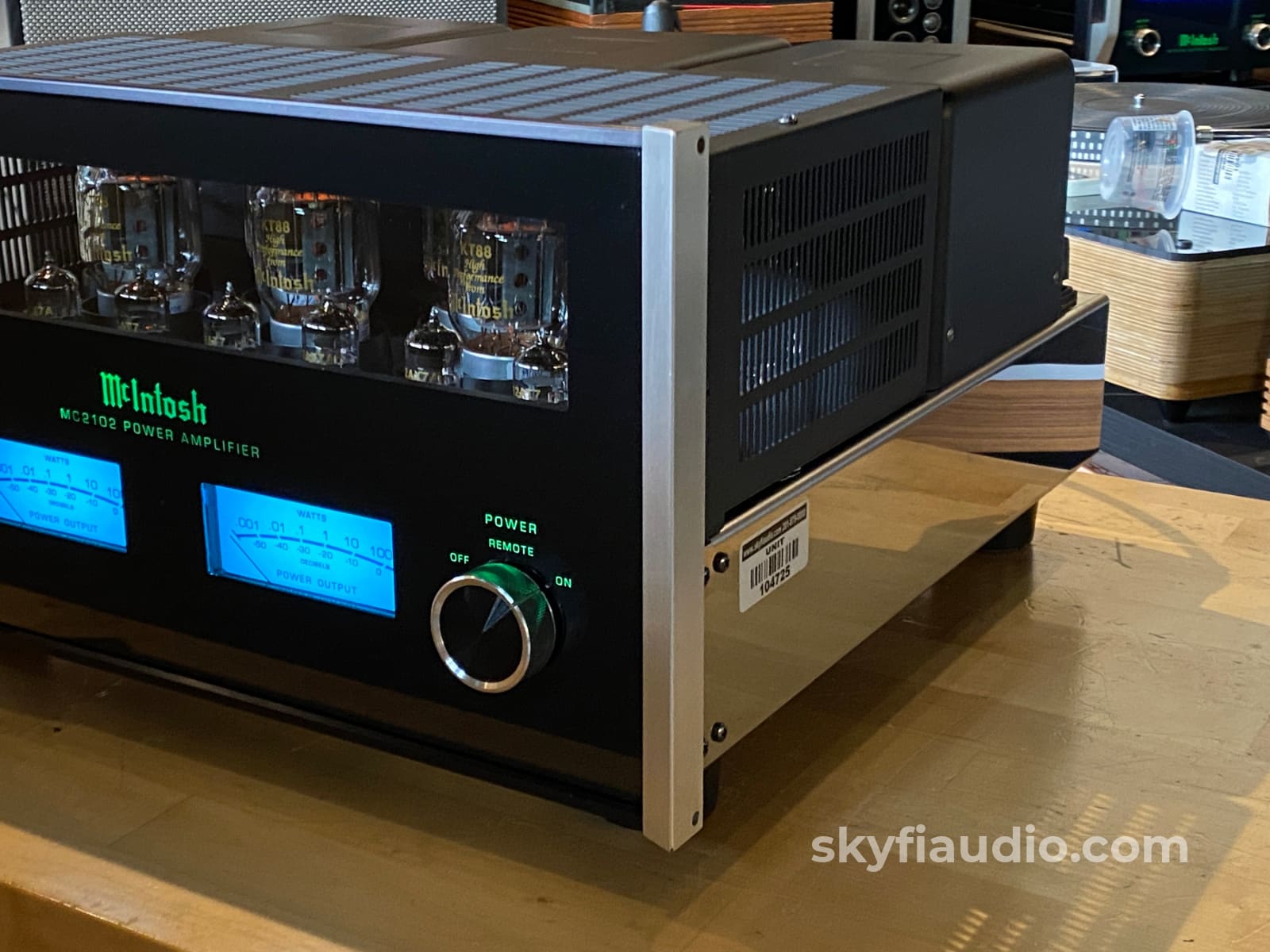
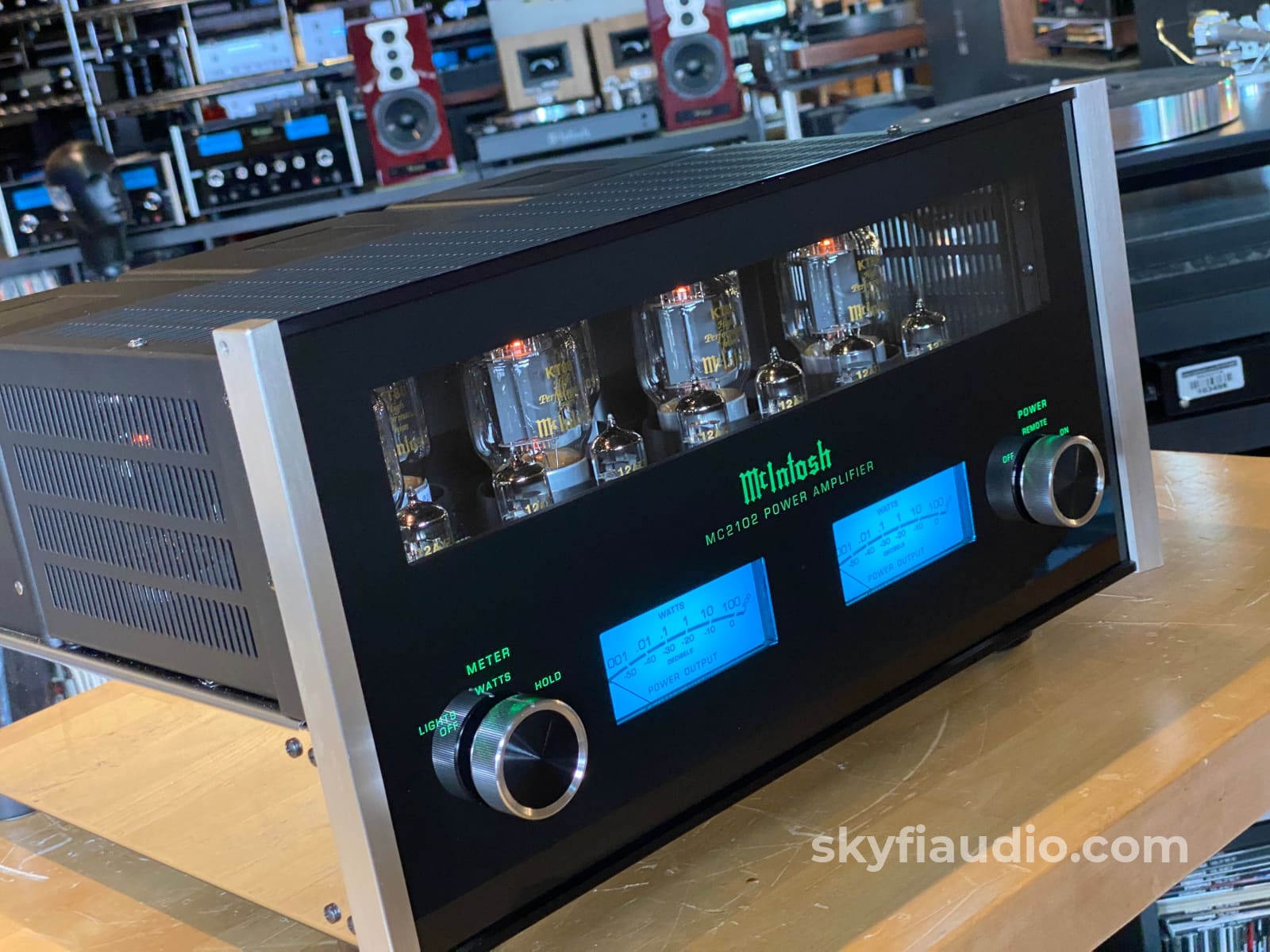
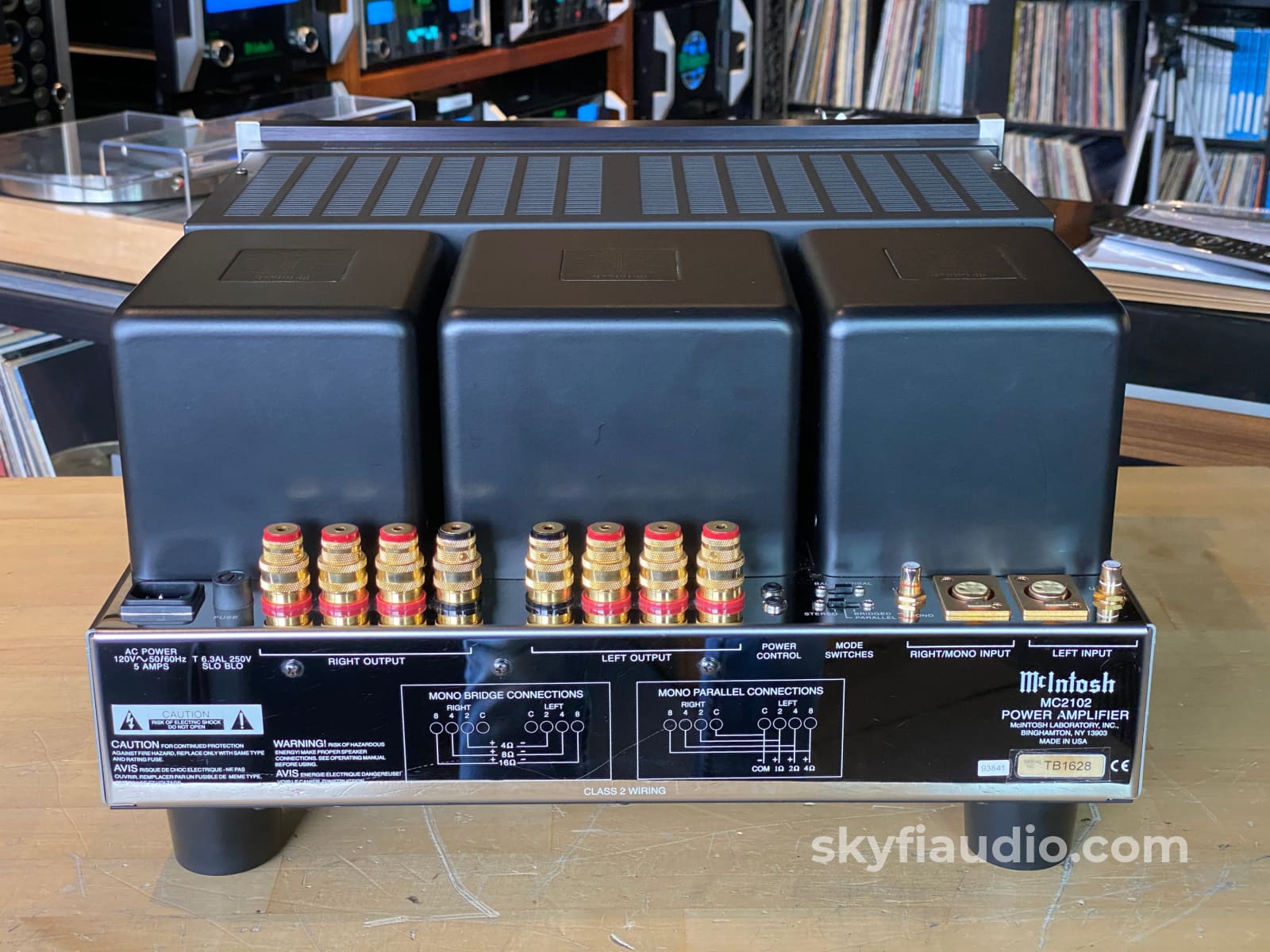
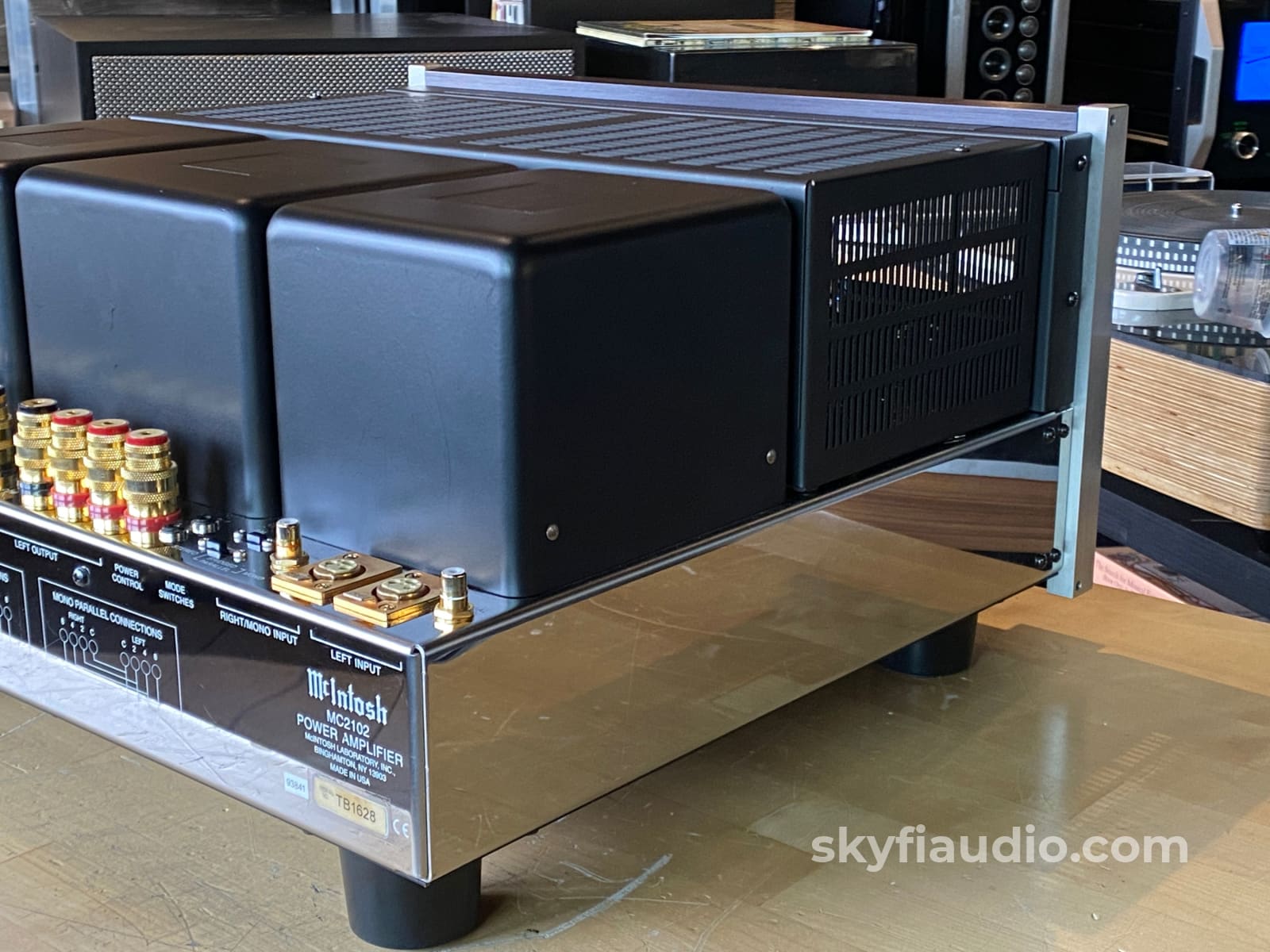
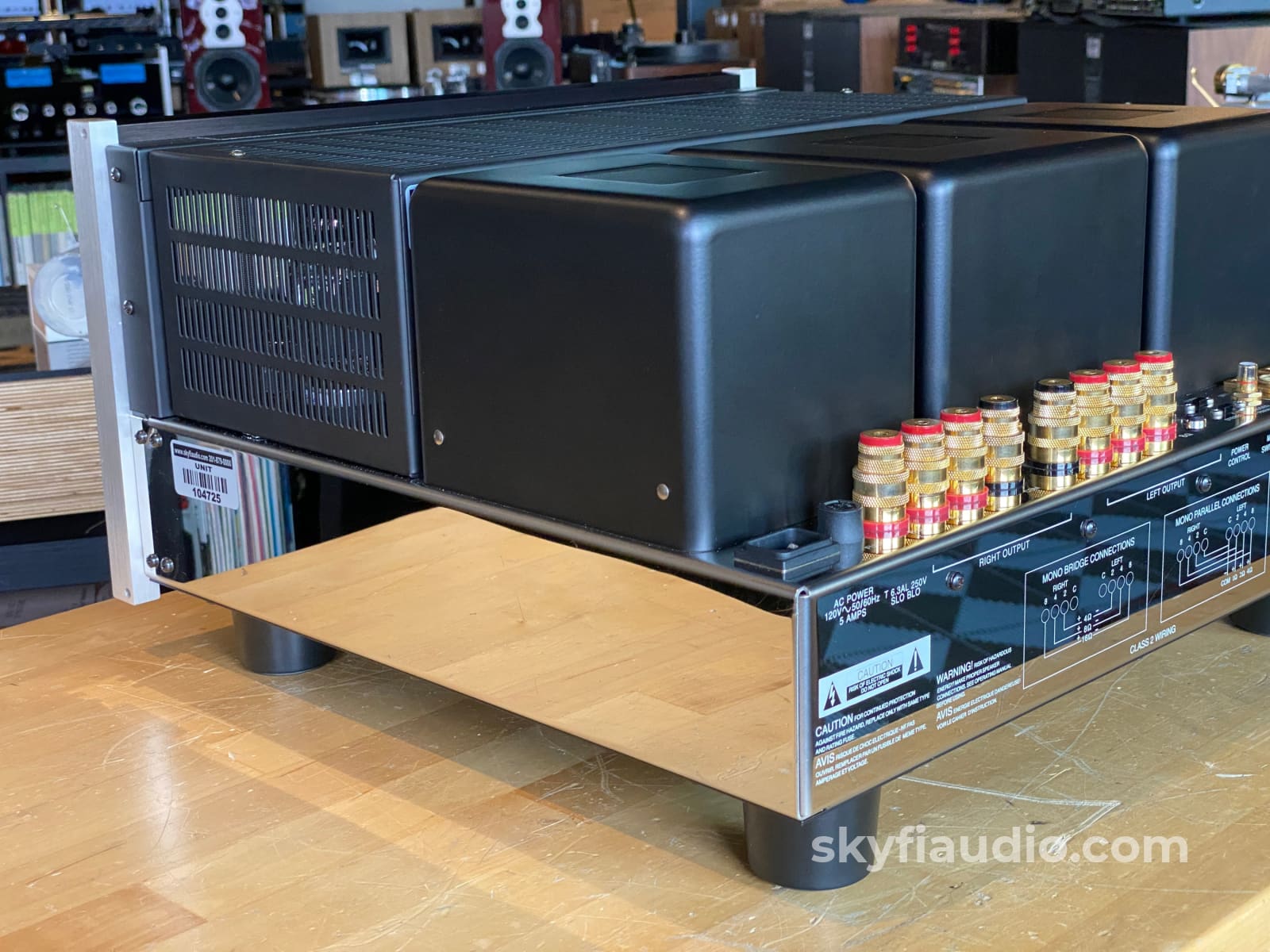
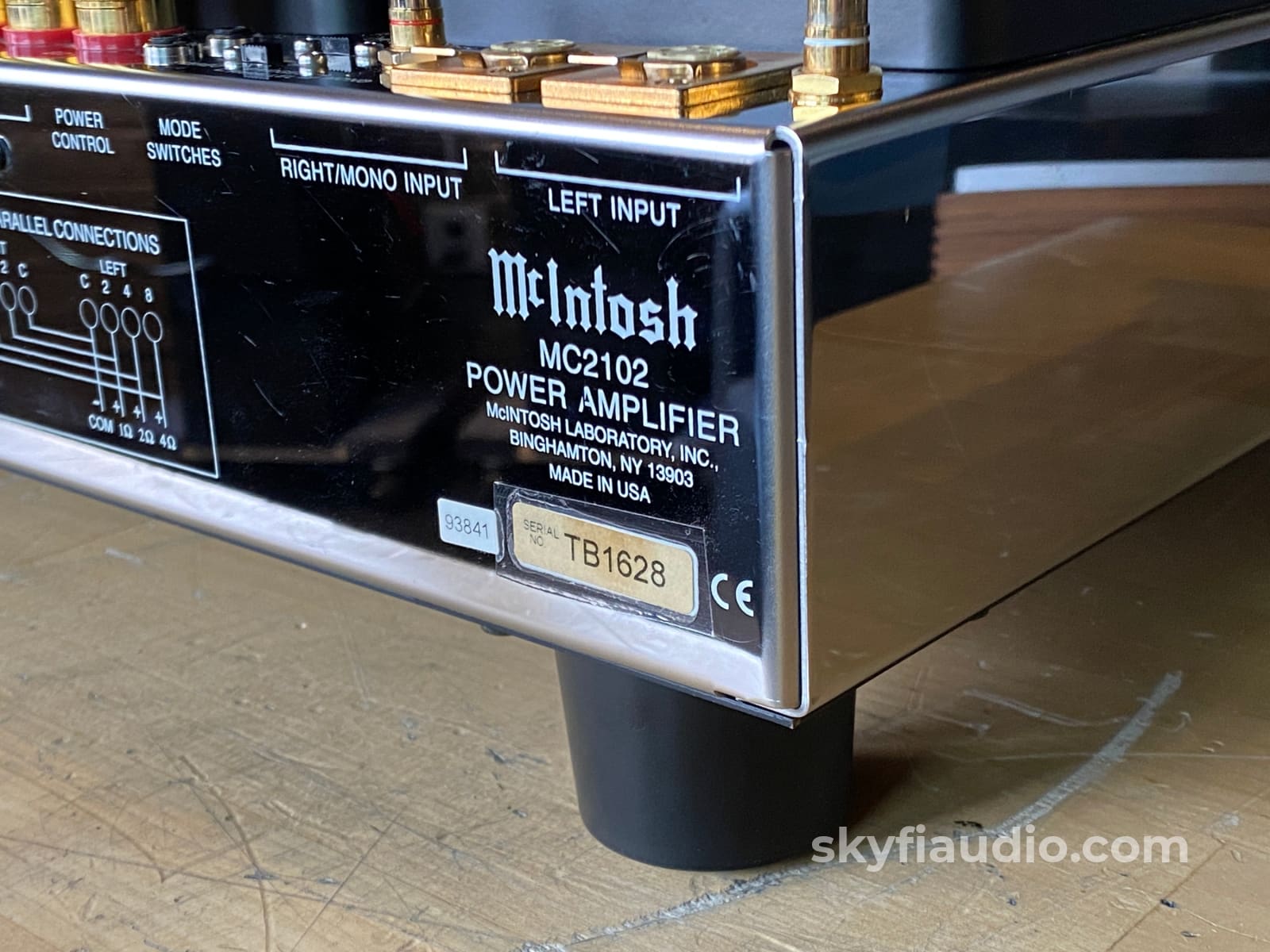
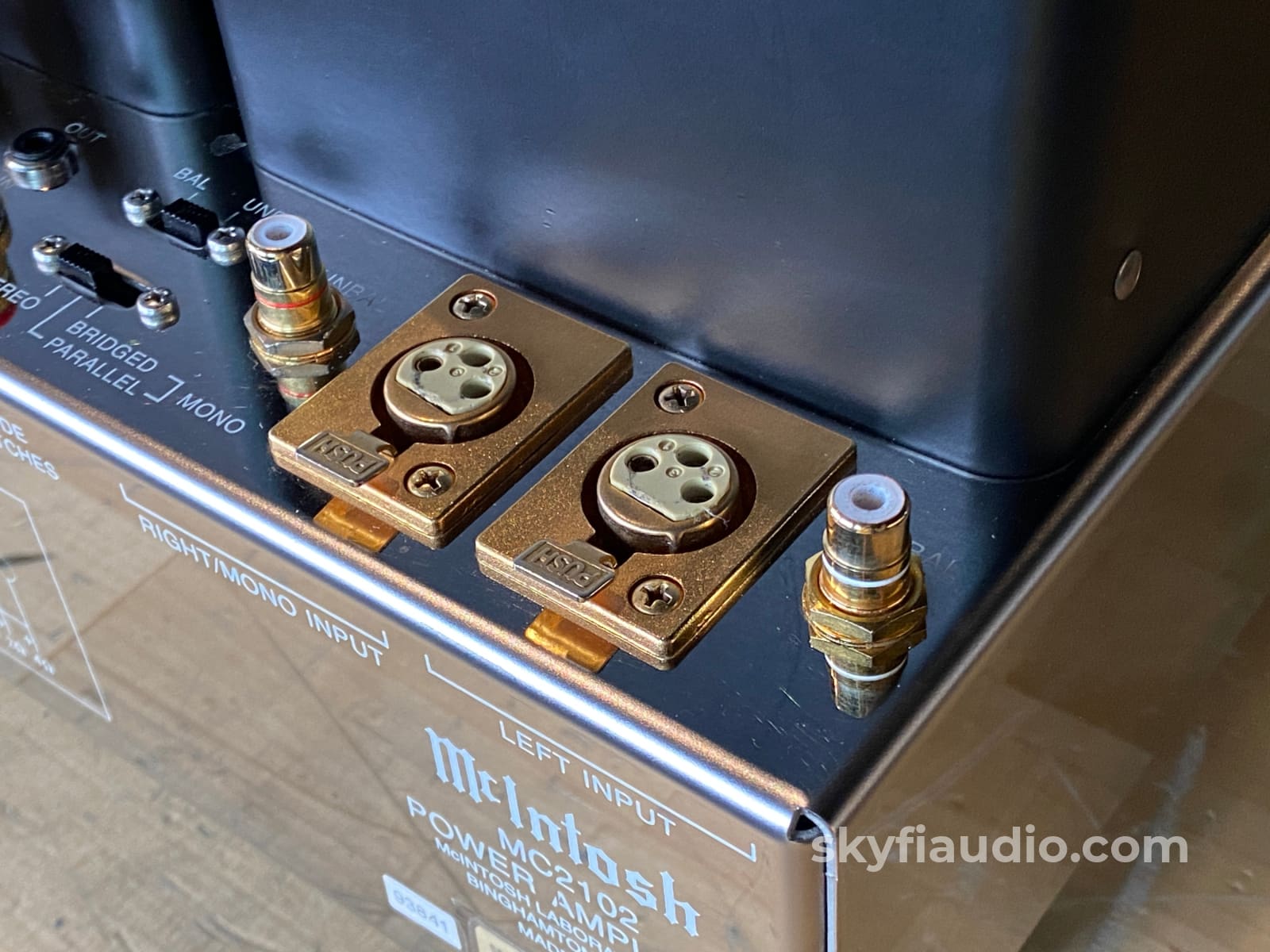
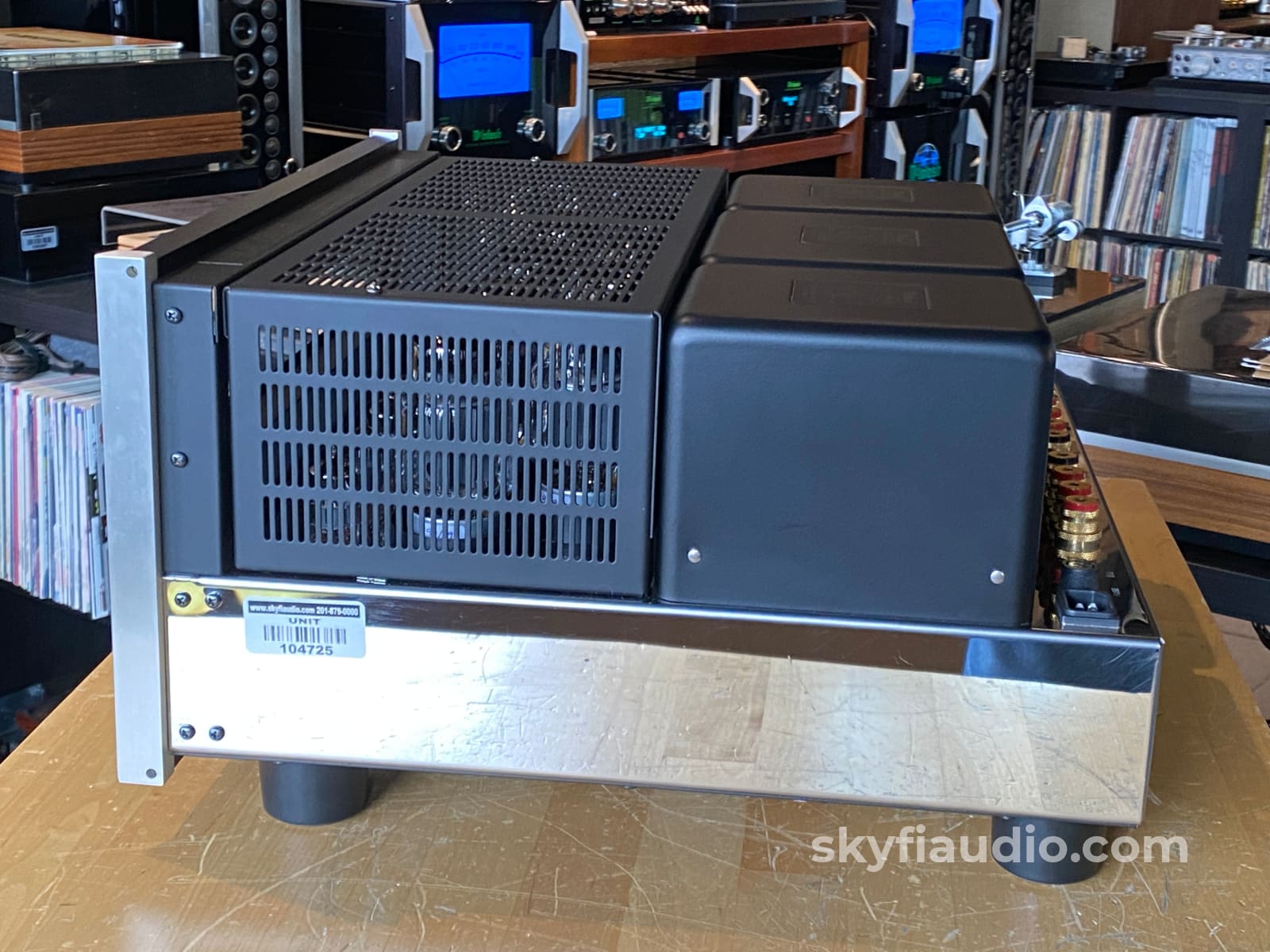
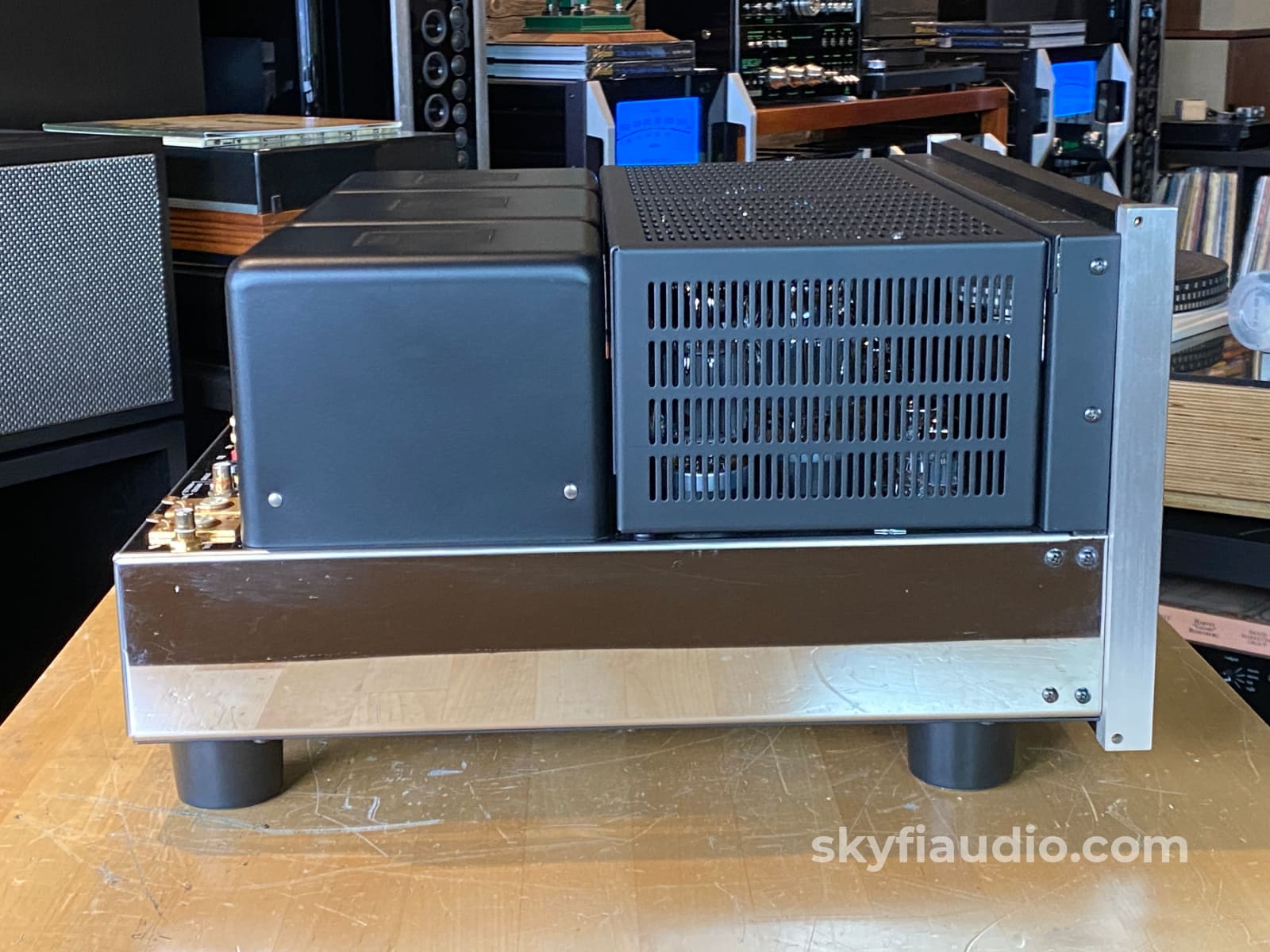


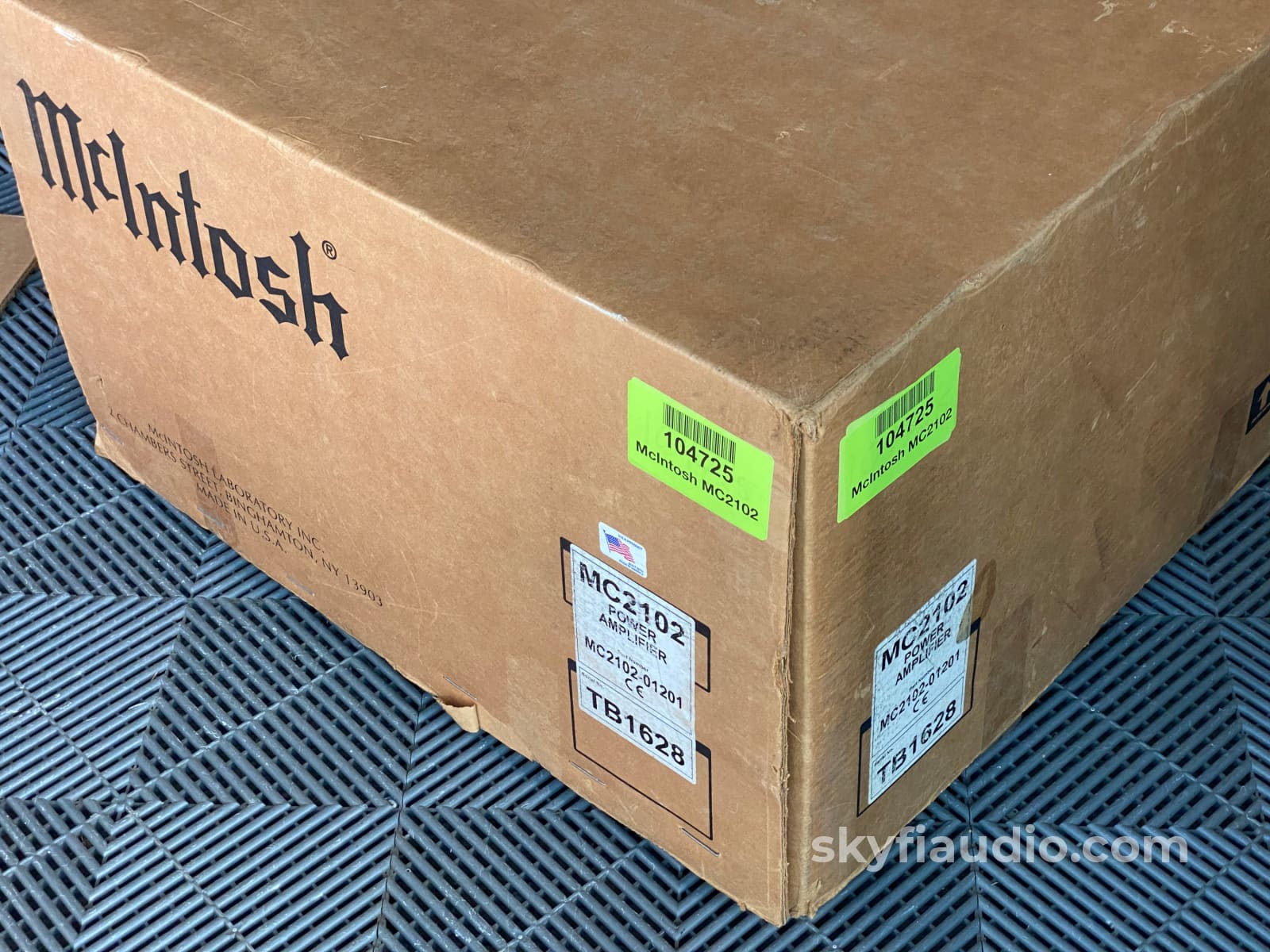
McIntosh MC2102 Vintage Tube Amplifier - Serviced w/ LED
Free Shipping on Most Electronics - Excludes Speakers and Items Requiring Freight - Contiguous U.S. Only
Pickup currently unavailable at SkyFi 479

McIntosh MC2102 Vintage Tube Amplifier - Serviced w/ LED
SkyFi 479
479 South Broad Street
Glen Rock NJ 07452
United States
General:
If you like the MC275 then you'll LOVE this MC2102.
The MC2102 features a similar design and topology, but with a bit more power and a better looking form factor in a traditional chassis configuration.
Best of all it sports the legendary McIntosh meters on the faceplate while still showing off the glow of the tubes through a viewing window.
This particular sample is in excellent condition.
Tested on our bench to full working power without issues. Visual inspection shows that all caps and internal components are healthy.
Includes a custom made dust cover to keep it looking new. Also includes a photocopy of the original manual, the original sales brochure, and a McIntosh double shipping box new from the factory.
This will ship via Freight securely strapped to a pallet to ensure safe travels for a flat $425 anywhere within lower 48 US states. Local pickup welcome, and local courier is also an option if you're within about 50 miles of our shop.
Please note this item is excluded from any SkyFi free shipping promotions due to size and weight.
Technical Notes:
This amplifier was just serviced in house. The main filter capacitors were replaced. All illumination was updated to LED. A brand new set of McIntosh labeled tubes was installed. Output tube bias was adjusted according to the official McIntosh service bulletin which reduces thermal stress and extends output tube life.
Brand Background:
McIntosh Laboratory is an American manufacturer of handcrafted high-end audio equipment based in Binghamton, New York. The company was founded in 1949 by Frank McIntosh. The company designs and produces audio amplifiers, stereo tuners and other consumer electronics products.
Connections:
RCA, XLR inputs, IEC Power Cord, Power Control 1/4", 5 Way Binding Posts for Speakers
General Sound:
Big beautiful musical sound with little fatigue.
Working Condition:
Working perfectly and tested in our lab and listening room.
Included:
Photocopy of the original manual, original sales brochure, and a McIntosh double shipping box new from the factory.
Packing:
Original Manufacturers Packing
Specs:
Power Output Stereo
Minimum sine wave continuous average power output per channel, all channels operating is:
100 watts into 2 ohm load
100 watts into 4 ohm load
100 watts into 8 ohm load
Power Output Mono Parallel
Minimum sine wave continuous average power output is:
200 watts into 1 ohm, 2 ohm or 4 ohm load
Power Output Mono Bridge
Minimum sine wave continuous average power output is:
200 watts into 4 ohm, 8 ohm or 16 ohm load
Rated Power Band
20Hz to 20,000Hz
Total Harmonic Distortion
Maximum Total Harmonic Distortion at any power level from 250 milliwatts to rated power output is: 0.5% for 2, 4 or 8 ohm loads (Stereo)
0.5% for 1, 2 or 4 ohm loads (Mono Parallel)
0.5% for 4, 8 or 16 ohm loads (Mono Bridge)
Frequency Response
+0, -0.25dB from 20Hz to 20,000Hz
+0, -3dB from 10Hz to 70,000Hz
Sensitivity
2.5 Volt unbalanced inputs
5.0 Volt balanced inputs
A-Weighted Signal To Noise Ratio
100 dB
Intermodulation Distortion
Maximum Intermodulation Distortion if instantaneous peak output does not exceed twice the rated output, for any combination of frequencies from 20Hz to 20,000Hz is:
0.5% for 2, 4 or 8 ohm loads (Stereo)
0.5% for 1, 2 or 4 ohm loads (Mono Parallel)
0.5% for 4, 8 or 16 ohm loads (Mono Bridge)
Input Impedance
20,000 ohms unbalanced inputs
40,000 ohms balanced inputs
Wide Band Damping Factor
Greater than 18
Tube Complement
4 - 12AX7A Inputs and Phase Inverters
4 - 12AT7 Voltage Amplifier and Drivers
8 - KT88/6550 Power Output
Dimensions
Front Panel: 17-3/4 inches (45.54cm) wide, 10-1/8 inches (25.72cm) high.
Depth behind front mounting panel is 16 inches (40.64cm).
Clearance required in front of the Front Panel is 1 inch (2.54cm) for knobs.
Weight
88 pounds (40 kg) net
121 pounds (54.9 kg) in shipping carton
Dimensions:
Front Panel: 17-3/4 inches (45.54cm) wide, 10-1/8 inches (25.72cm) high.
Depth behind front mounting panel is 16 inches (40.64cm).
Clearance required in front of the Front Panel is 1 inch (2.54cm) for knobs
Weight:
121 lbs.
Link to Manual:
Click Here
Recommended Cables:
Kimber Kable - RCA Interconnects - Better
Kimber Kable - RCA Interconnects - Best
Kimber Kable - BALANCED XLR Connectors - Better
Kimber Kable - BALANCED XLR Connectors - Best
Kimber Kable - Speaker Cables - Better
Kimber Summit Series Monocle XL Speaker Cables (PAIR) - Best
Kimber Summit Series BiFocal XL Bi-Wire Speaker Cables (PAIR) - Best If Applicable
Kimber Kable - Power Cords - Better
Kimber Kable - Power Cords - Best
The SkyFi Testing Process for Tube Amplifiers:
We start with a visual inspection of all internal components to make sure that there are no signs of heat stress or damage. Capacitors are checked for telltale signs of predictive failure including bulging, shrunken wrappers, or physical leakage. We also inspect resistors and other passive components for signs of overheating. If tube arcing has occurred in the past we can usually spot discoloration on the output tube sockets. On vintage units we often spot check select capacitors for value and ESR.
If the amplifier passes visual inspection, we move on to a full test of all of the tubes. We use an Amplitrex AT-1000 Tube Tester which is capable of testing both emission and Gm with a high degree of accuracy. We document the results of each tube and replace any weak or suspect tubes before proceeding. When we power on tube amplifiers for the first time we usually use a variac and current limited AC supply and slowly raise the voltage up to nominal mains level while monitoring plate, screen, filament, and negative bias supply voltages where applicable. If everything is in order we feed a low level test signal into the amplifier’s input and monitor its output on an oscilloscope across an 8 ohm dummy load. At this point we are just looking to verify basic function and confirm that the output transformers are not damaged. Once we have verified that the amplifier is safe to operate, we connected it to full mains power. For fixed bias amps we set the bias to manufacturer spec. For cathode biased amps we monitor the plate to cathode voltage to determine if the output tubes are operating in a safe range. Once the output section is verified we move onto bench evaluation.
We start by feeding the input of the amplifier with a low level 1KHz test signal, slowly increase its amplitude while monitoring the amplifier’s output on an oscilloscope for signs of noise, clipping, distortion, or improper channel balance. We continue increasing the signal level until the amplifier reaches clipping. At this point we take an output power measurement and compare it to the spec sheet of the amplifier to verify proper performance. We finish off the bench evaluation with a 1KHz square wave check and a 20Hz to 20KHz sine sweep to assess the amplifier’s frequency response characteristics. This battery of tests will usually reveal if the amplifier has any issues that need further attention.
Before the device leaves the bench, we perform a listening test with actual music using a variety of preferred test tracks. Our benches are outfitted with familiar monitor speakers which help us identify inconsistencies that will not always show up on our test gear. The main things that we are listening for are hum or noise with no signal present, proper center image, clicks, pops, or any other obvious undesirable audio characteristics.
If the unit passes all of these tests it is moved to our long term testing rig where we simulate real word operating conditions for 6-8 hours. For tube amps we like to run this test at least twice. This allows us to monitor the unit for signs of thermal runaway or intermittent issues that only crop up when it has fully come up to temperature. We find this step to be essential, especially for vintage units.
Choose options


















